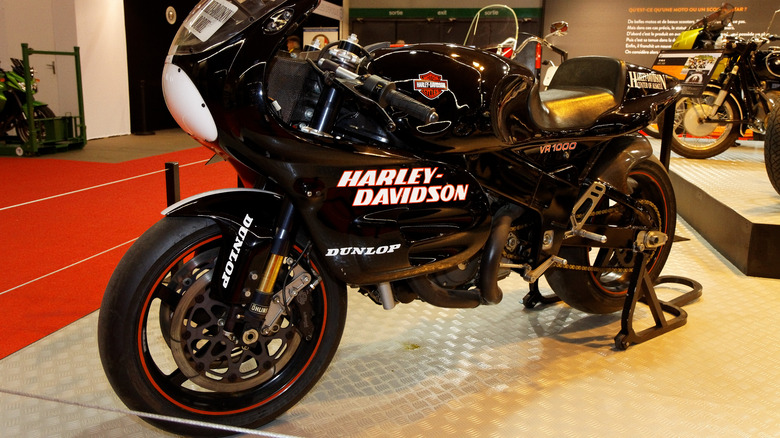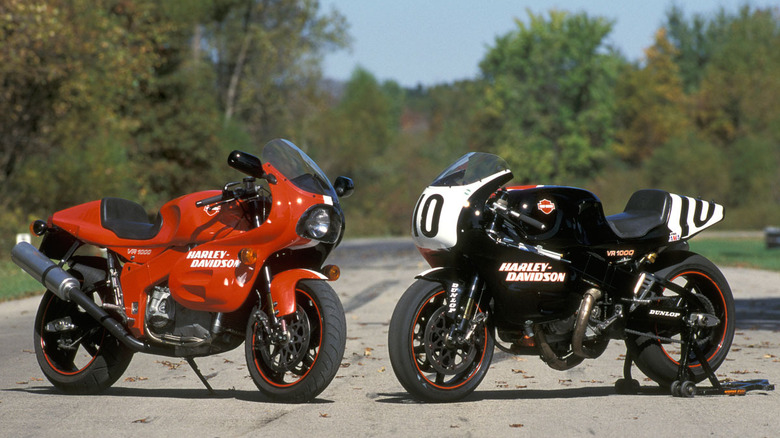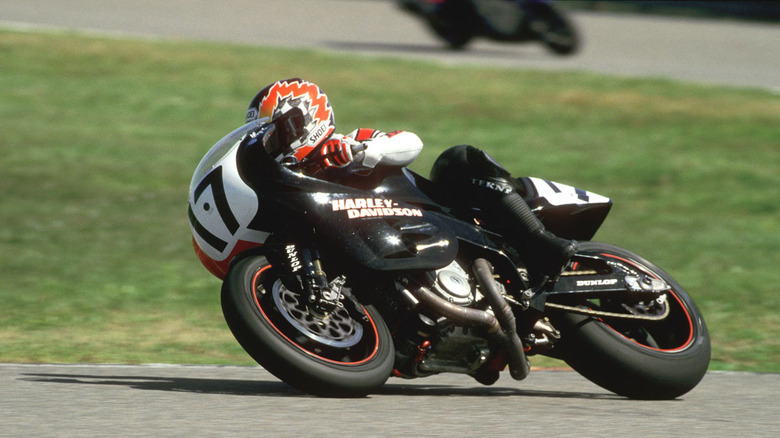Only 50 Of This Harley-Davidson Racing Bike Were Made Available To The Public
For Harley-Davidson's reputation as the wise old man of American motorcycling, content to churn out choppers and long-range cruising bikes until the world ends, it has managed some engineering surprises over the years. Check all the buzz about the recent LiveWire e-bikes, or take a look at this beauty, stripped out and tricked up for active-duty wartime service back during World War II.
Harley's inclination to experiment has almost vanished from gearhead memory. The 1994 Harley-Davidson VR1000 tested a wild new direction for such an established marque, as well as hinting at changes that could have taken over the whole American motorcycle marketplace, if things had gone just a little differently.
As every kind of personal vehicle shifts toward the lighter, leaner, and more sustainable, and particularly as Harley-Davidson tries strategy after strategy to remain marketable to younger customers, it's worth looking back at the VR1000. Despite just 50 models being sold, it could have meant major changes to the legacy brand almost 30 years ago.
Tomorrow's bike yesterday
The Harley-Davidson VR1000 was the famous American marque's first attempt at a true road racer, set to compete with the output of small, fast European and Asian bikes from the likes of Ducati, Honda, and Kawasaki. Sporting a Ducati-style fuel injected V-twin and a water-based cooling system, the VR1000 picked up the nickname of "the anti-Harley" in engineering circles (via Hemmings).
With 135 hp at 10,000 rpm or better, not to mention a curb weight of just 388 pounds, the VR1000 was a distant departure from Harley's traditional "big muscle, big iron" approach. By the numbers, it was ready for serious AMA racing (via Motorcycle Specs).
Emphasis, alas, on "was." For Harley-Davidson, new to the world of light fast-revving superbikes, changing manufacturing approaches took time. Harley also had a brand identity to defend. Even in years before Harley-Davidson onesies and wine koozies, Harley was supposed to mean American big metal, not razor-edged, plastic wrapped global performance. Those concerns left the development of the VR1000 with Roush Racing. Per Hemmings, it was over a year before Harley itself took over construction.
Winning, losing and changing the game
By the time the VR1000 was ready to race, the pack had passed it by. Specifications that ranked with the best of 1990 were agonizingly average in 1994. The VR1000 put up several solid but unremarkable finishes. Its best was a third-place podium finish at the Mid-Ohio AMA Superbike race (via American Motorcyclist).
While the VR1000 may not have set records, it did change minds. American bikes were hanging with the best of Ducati, Kawasaki, and BMW. This left an opening at the top of the American superbike market that other manufacturers could fill. In subsequent years bike-builders the world over started making and selling superbikes in the U.S.
Despite underwhelming racing success and only 50 models released to the public, the Harley-Davidson VR1000 was still a ride that mattered. The VR1000 may not have won many races, but it did change the game.


